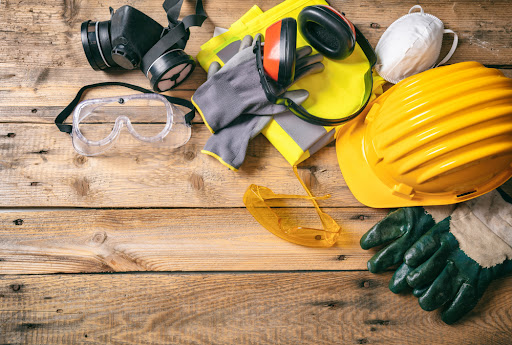
We all need a hobby. There are many proven benefits to having a hobby. Improved wellbeing, greater satisfaction in life, a way to spend time – the list goes on.
And there are as many different sorts of hobbies as there are different types of people. Some people enjoy board games, others video games. Others still like to sew, crochet or embroider. Hunting and fishing might be another person’s cup of tea.
One hobby many people love is working with wood and doing DIY jobs around the house. If you like to do up your house in your spare time, you’re not alone. Many people engage in DIY jobs as a hobby or just because there’s a job that needs doing at home.
However, you need to be careful when working with power tools. A single lapse of concentration and you could wind up missing a finger – or worse.
In this helpful article, we’ll teach you how to handle it with care. You’ll learn a professional’s guide to using power tools safely.
Wear Appropriate Personal Protective Equipment
The first thing to do is obtain the appropriate personal protective equipment or PPE. This is wearable gear that will protect you during the use of power tools.
There are a few different types of PPE that will vary depending on what tools you are using.
Let’s detail them now.
Ear Plugs or Ear Muffs
You’ll want to use ear protection when working with loud power tools. For instance, a chainsaw can emit decibels loud enough to damage your hearing, as can a power saw or a jackhammer. Your eardrums are incredibly delicate, and you can do lasting damage without appropriate ear protection.
Respirators
This type of PPE is a must-have when working with tools that cause particulate matter to fly around in the air. Think sanders, saws, trimmers and other power tools that throw up a lot of dust. Other things that can cause harmful particles are spray paint or varnish.
You can either use disposable respirators or half-face respirators. It will depend on what type of dust or gas you want protection from. Respirators should be part of any home stock of PPE.
Eye Protection
The next type of PPE to obtain is proper eye protection. You need some safety glasses. If you wear prescription lenses, then you can get safety goggles designed to fit over your spectacles.
This PPE is a must-have when sawing, sanding, cutting, or any power tool task that causes flying particles. A single stray splinter or chip can take out an eyeball, so this is a must-own piece of safety gear.
Heavy Duty Gloves
Another safety measure when using power tools is a set of heavy-duty gloves. These will protect your hands while you work and stop scratches and cuts.
Work Boots
The next piece of clothing to obtain is a pair of rugged work boots. You should never use power tools in open-toed shoes such as sandals or thongs. Imagine drilling into your big toe – ouch!
Full Body Clothing
It’s always a great idea to wear clothing covering your whole body when working with power tools. It might be tempting to wear shorts and a t-shirt on a hot day, but this is not the safest approach.
Other Safety Tips
Let’s explore some other safety tips to employ when working with power tools.
Pointed Tools
Never carry tools that have a point in your pocket. This might include drill bits, impact drivers, hand saws, multi-tools, screwdrivers, chisels, knives or other cutting implements. One trip, and you could seriously injure yourself. Carry them in a toolbox or bucket as you work.
Be Mindful of Cords
Power tool cords can present a significant tripping hazard. Try to keep them out of walkways or across thresholds where someone could trip on them.
Carry Power Tools Properly
Never carry a corded power tool by the cord. Always carry the tool by the handle or around the middle.
Detach Drill Bits After Use
Make sure to always detach your drill bits once you are finished using the drill.
Maintain Your Tools
Look after your power tools to keep them in tip-top shape. Sharpen blades, and keep them clean. A well-looked after the tool is less likely to malfunction and cause an injury.
Always Use a Power Tool on a Stable Surface
Make sure you always have a stable surface to stand on or have two feet on the ground. One tip is to not stand one-footed to reach something while on a ladder and when using a power tool. If you do this, you compromise your centre of balance and could become a prime candidate for a fall.
A Safe Summary
We’ve taught you how to handle tools with care and shared a professional guide to power tool safety in this helpful article. Proper PPE is a must-have; ensure you have every piece of PPE we’ve listed here. Follow the other tips to use your power tools safely and finish the job without risk.




 POSTED BY
POSTED BY 

